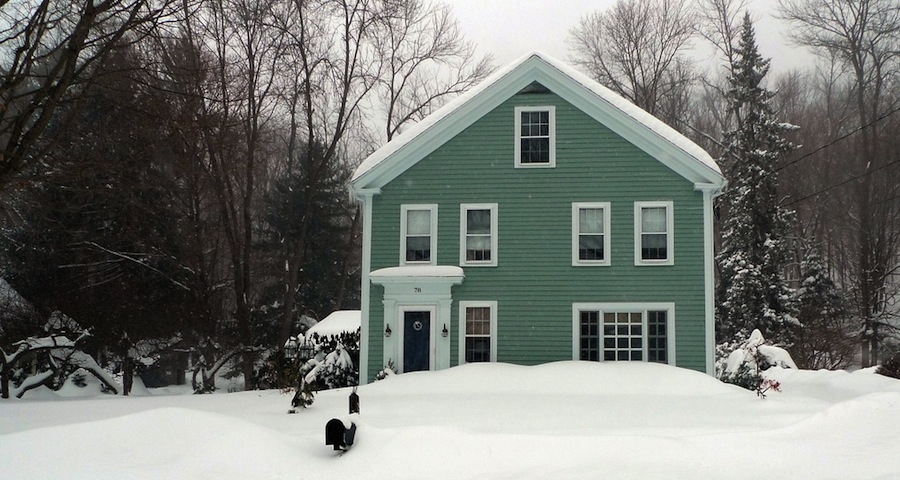
- News
- Posted
Passive House Institute certifies new components for cold climates
The Passive House Institute has certified two new windows and a new skylight as suitable for use in passive house buildings in cold climates.
All three products have exceptionally good U-values and obtained the 'A' category of certification, the highest available. Here's the blurb from the Passive House Institute:
In cold climates it is particularly important for passive house buildings to retain warmth. New components make the design of such buildings in the "far North" even easier and more cost-effective. On the heels of a skylight by the company Lamilux, two windows especially suited to cold climates have been awarded certificates by the Passive House Institute: the ENERsign Arctis by Pazen Fenster+Technik and the Rukna-1 of the Russian manufacturer BiTri. All three products reach the highest efficiency level possible, class phA.
The qualification of passive house designers and consultants in countries such as Sweden or Canada has already made numerous projects that meet the international passive house standard possible. "The new components, which will hopefully be followed by others with the necessary characteristics, will serve such regions well in terms of heightened comfort, affordability and energy efficiency," stresses Dr Benjamin Krick, head of component certification at the Passive House Institute. The same naturally holds true for areas with similar climates deep in the southern hemisphere or high in the mountains.
The ENERsign Arctis of the German manufacturer Pazen Fenster+Technik achieves outstanding U-values of 0.46 W/(m²K) with its high quality quadruple glazing. The spruce, fir and aluminium frame (0.11 W/(mK)) contains XPS (0.028 W/(mK)) and ENERfoam (0.04 W/(mK)) insulation. The glazing, 64 millimetres thick in total (3/18/2/18/2/18/3), is supported by a PVC-panel (0.17 W/(mK)). The use of semi-tempered thin film glazing results in a quadruple-paned window that is hardly heavier than common double-paned windows. The Arctis is the newest product in the ENERsign line, which has set the bar for energy efficiency in previous years as well.
The Rukna-1 by BiTri of Moscow, so far the only component from Russia with passive house certification, attains a U-value of 0.58 W/(m²K) with its composite frame and quality triple glazing, featuring an added exterior pane. The spruce and fir frame (0.11 W/(mK)) includes an aluminium rain rail, while CompacFoam 150 (0.043 W/(mK)) situated inside the frame itself serves as the necessary insulation. The glazing has a total thickness of 87.3 millimetres (4/22/4/20/4). The developer of the Rukna-1 already claims to have ideas for further optimisation – potentially towards a window meeting the passive house component criteria for the even more challenging arctic climate.
The skylight by the German company Lamilux (I-System Glaselement FEenergysave+) was certified by the Passive House Institute in spring of this year as the first ever passive house component for the cold climates as defined by the Passive House Institute. Its aluminium frame boasts a U-value of 0.65 W/(m²K). This was achieved through the use of resol resin foam (0.022 W/(mK)) inside the casement, the dome and in the area of the thermal bridge arising from the installation. The quadruple glazing with krypton filling has a total thickness of 54 millimetres (6/12/2/12/2/12/8) and also makes use of semi-tempered thin film glazing for the inside panes.
Related items
-
 EPDs key to reducing embodied carbon – Munster Joinery
EPDs key to reducing embodied carbon – Munster Joinery -
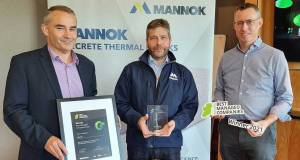 Mannok named one of Ireland’s best managed companies
Mannok named one of Ireland’s best managed companies -
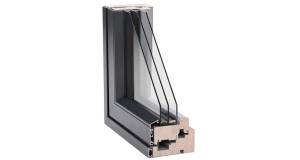 Aluclad windows offer numerous advantages: Prestige Aluclad
Aluclad windows offer numerous advantages: Prestige Aluclad -
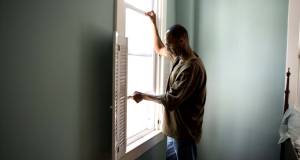 Window-opening unreliable for ventilation, study finds
Window-opening unreliable for ventilation, study finds -
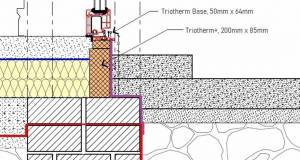 Prodomo offer certified thermal brackets for windows and doors
Prodomo offer certified thermal brackets for windows and doors -
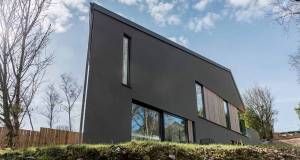 Prestige Aluclad: bespoke passive glazing can be competitive
Prestige Aluclad: bespoke passive glazing can be competitive

